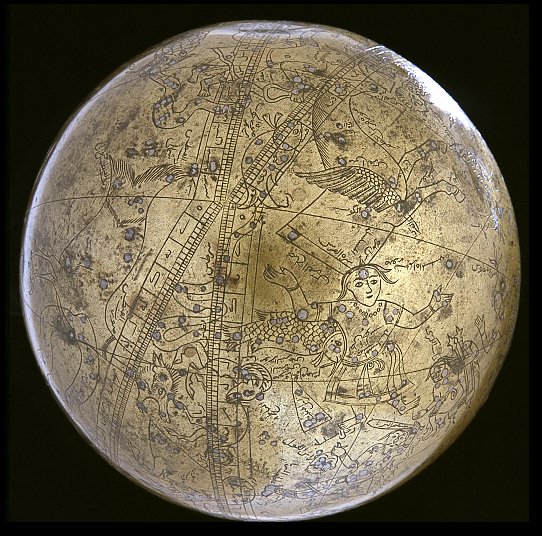334. The very special omotohi glyph Ca7-24 obviously marked the end of the first half of the month, expressing where the Moon no longer would countinue to grow but start to decline:
72 * 4 = 288 and 72 * 5 = 360. If we should count from the last day of the previous year October 15 (288) will be day 300 (= 366 - 354 + 288). I.e. 6 = 360 - 354 = 366 - 360.
The C text has 6 'extra' days both at the beginning of side a and at the beginning of side b:
Ca1-6 corresponds to 'February 28 (59) and at that time of the year (in Roman times) there was still a 'close embrace' between Father Sky and Mother Earth ... Sky (rangi) and Earth (papa) lay in primal embrace, and in the cramped, dark space between them procreated and gave birth to the gods such as Tane, Rongo and Tu. Just as children fought sleep in the stifling darkness of a hare paenga, the gods grew restless between their parents and longed for light and air. The herculean achievement of forcing Sky to separate from Earth was variously performed by Tane in New Zealand and the Society Islands, by Tonofiti in the Marquesas and by Ru (Tu) in Cook Islands ... - as regarded north of the equator according to their Sun calendar (or indirectly from observing the position of the sooted face of the Full Moon half a year later when the Sun instead would have been in the black Raven constellation). ... The Sun and the Moon were siblings - a brother and a sister - without parents. Siqiniq (the Sun) was staying all alone in an igloo. The camp would hold festivities in the qaggiq. One day, as usual, they started to hold a qaggiq early in evening when it was dark. Someone rushed into Siqiniq's igloo and blew out her qulliq at the same time. She was then pinned down and molested. This happened a number of times and Siqiniq was unable to find out who her attacker was. Her cooking pot always hung over her qulliq. When her attacker came again, she reached out and tried to touch the pot but her lamp was out and it was completely dark. Finally she managed to touch the pot. She then wiped her sooty hands on the face of her aggressor. After she had been molested once again the aggressor left her igloo. She followed him to see where he would go, hoping to finally find out who he was. She saw him going to the qaggiq where the festivities were being held. As she neared it she could hear people laughing. Someone was saying: 'Taqqiq inutuarsiurasumut aasit naatavinaaluk'. - Taqqiq (the Moon) has been marked with soot as he has again been looking for someone who might have been alone ... Cb1-6 (398) corresponds, I suggest, to where Land had been reached with a Tree (rakau) bursting through the virgin earth.
... In South America the rainbow has a double meaning. On the one hand, as elsewhere, it announces the end of rain; on the other hand, it is considered to be responsible for diseases and various natural disasters. In its first capacity the rainbow effects a disjunction between the sky and the earth which previously were joined through the medium of rain. In the second capacity it replaces the normal beneficient conjunction by an abnormal, maleficient one - the one it brings about itself between sky and earth by taking the place of water ... 398 (Cb1-6) - 366 = 32 and 59 ('February 28) + 32 = 91 ('April 1):
In modern times the positions of the stars were defined by a right ascension circle measuring 360º (= 24h = 1440m = 86400s), i.e. with 86400s / 360 = 240s (4m) per day, although the ancient Chinese instead measured the circle from the number of Julian days in a year (365¼º).
... When Julius Caesar established his calendar in 45 BC he set March 25 (3-25) as the spring equinox. Since a Julian year (365.25 days) is slightly longer than an actual year the calendar drifted with respect to the equinox, such that the equinox was occurring on about 21 March in AD 300 and by AD 1500 it had reached 11 March. This drift induced Pope Gregory XIII to create a modern Gregorian calendar. The Pope wanted to restore the edicts concerning the date of Easter of the Council of Nicaea of AD 325 ... ... The leap day was introduced as part of the Julian reform. The day following the Terminalia (February 23) was doubled, forming the 'bis sextum - literally 'double sixth', since February 24 was 'the sixth day before the Kalends of March' using Roman inclusive counting (March 1 was the 'first day'). Although exceptions exist, the first day of the bis sextum (February 24) was usually regarded as the intercalated or 'bissextile' day since the third century. February 29 came to be regarded as the leap day when the Roman system of numbering days was replaced by sequential numbering in the late Middle Ages ... Assuming the Gregorian spring equinox in March 21 (0h) was placed immediately before the beginning of the text at Ca1-1 we can add the relevant stars and dates at the time of rongorongo. And Ca1-6 will then be at March 27 (86) = 59 ('February 28) + 27 (the precessional depth down to Roman times).
The First Point of Aries at Sheratan (*27) had moved ahead in the year since the time of Julius Caesar and April 17 (107) - 27 = 80 ('March 21). The Pope had tampered with the correlations between the stars and the calendar and therefore Sheratan was no longer in day 84 ('March 25). ... When the Pope Gregory XIII updated the Julian calendar he did not revise what had gone wrong before 325 AD (when the Council of Nicaea was held). Thus the stars were still 3-4 days 'out of tune' compared to the calendar ... the Gregorian 'canoe' was 'crooked'. His calendar was not in perfect alignment with the ancient star structure. Because he had avoided to adjust with the effects of the precession between the creation of the Julian calendar and the Council of Nicaea in 325 AD ... From March 21 to April 17 in the following year there were 365 + 107 - 80 = 392 days (= number of glyphs on side a of the tablet). 392 = 365 + 27. 398 (at the Tree bursting through the crust of Mother Earth - illustrated by henua signs before and after) ought to have referred to the synodic cycle of Jupiter (Father Light):
The synodic cycle of Saturn was in comparison 20 days shorter - which might explain the otherwise rather strange name 'Swift-running' for the planet who was moving very slow out in its orbit beyond that of Jupiter:
If Cb1-6 (398) illustrated how Father Light (Jus-piter) - alias Tane, Tonofiti, Ru /Tu etc - forced himself out from the dark confinement between his parents, we should expect some sign of Saturn (still in the dark confinement) 20 days earlier in the text, and in position 384 there is a likely candidate, because counted from Ca1-6 the distance is 378 and we can recognize the return of the empty space:
398 (Cb1-6) - 384 (Ca14-21) = 14 = 20 - 6. The synodic cycle of Jupiter could have been measured from heliacal Sirrah, whereas that of Saturn could have been counted from 'February 28 (59). 80 + 398 = 478 = 16 * 29½ + 6. 59 + 378 = 478 - 41. 384 = 64 * 6 = 378 + 6. At the time of rongorongo heliacal Spica was in October 9 (282) and possibly it was she who was drawing the line. ... Proclus informs us that the fox star nibbles continuously at the thong of the yoke which holds together heaven and earth; German folklore adds that when the fox succeeds, the world will come to its end. This fox star is no other than Alcor, the small star g near zeta Ursae Majoris (in India Arundati, the common wife of the Seven Rishis, alpha-eta Ursae) ...
|
||||||||||||||||||||||||||||||||||||||||||||||||||||||||||||||||||||||||||||||||||||||||||||||||||||||||||||||||||||||||||||||||||||||||||||||||||||||||||||||||||||||||||||||||||||||||||||||||||||||||||













